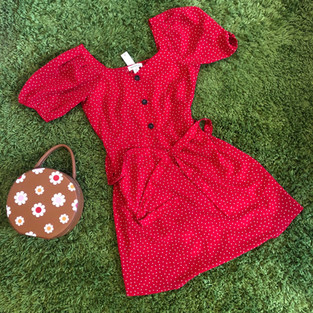The Circular Economy Redefines Shopping Sustainably
- adalindafashion
- May 29, 2020
- 3 min read
Across the globe, an emerging culture of disposable fashion has propelled retailers into mass-producing large quantities of inexpensive clothing. This fast-fashion model creates exponential amounts of waste and produces carbon emissions that fuel climate change.

In search for a solution to the increasingly important issue of climate change, the idea of a circular economy has presented itself.
A circular economy is based on the principles of designing out waste and pollution, keeping products and materials in use, and regenerating natural systems. The Ellen MaCarthur Foundation suggests applying these principles by focusing on three main areas: (1) Creating New Business models that increase clothing use, (2) utilizing safe and renewable inputs, and (3) discovering solutions that allow used clothes to be turned into new.
To offset the environmental impact of the fashion industry, consumers, as well as brands, to start taking responsibility.
Globally consumers miss out on $460 billion of value each year by throwing clothes away that they could continue to wear. As a result there are emerging innovations to help us shop sustainably. Buying second-hand is the new trend emerging through new ways. Re-sellling your old clothes, also called re-commerce is a win-win for both your pocket and the planet.
The creation of digital resale platforms has accelerated the growth of a circular economy. Re-commerce platforms such as Poshmark, Depop, and ThreadUp offer consumers new ways to buy and access clothing. They provide affordable and sustainable ways to shop as well as profitable alternatives to either throwing away or donating used clothing.
In late February of 2020, resale marketplace Poshmark surpassed it’s 100 million order milestone. Due to a growing consumer focus on sustainability, apps such as Poshmark have seen a recent increase in brand awareness.
Re-commerce apps have given us the perfect business opportunity. Before the internet, reselling items was a daunting process. Now, instead of throwing a garage sale, we have the seamless capability to profit off our unwanted items with the snap of a picture.

It takes under 5 minutes to list an item on Poshmark. All that's required to make a sale are some decent pictures, basic knowledge of the garment, and continued effort. I encourage you to consider your options after your next closet clean out and choose to re-sell your unwanted items.
Donating or throwing away might seem like the easiest route. Many charities receive more donations then needed. This results in more clothing to end up in a landfill. If the garments do not make it to landfill they are shipped to markets overseas to Africa. This often hurts African economies. When you re-sell, you personally profit while also continuing a garment’s life and thus reducing your own waste. It is truly a win-win situation.
In addition to reducing waste, re-commerce apps help people make more sustainable purchases. When feeling the impulse to shop, consider going to the mall to browse trends for inspiration instead of purchasing from fast fashion retailers. There is so much clothing available on re-commerce platforms that you can most likely find any variation of what you’re looking for.
Not only can you continue to follow trends when shopping second hand, but you’ll have access to far more unique and quality items. Vintage and second hand clothing is not only genuine, but sold at an affordable price. Even if the item is a little steep for your budget, contact the seller and see if they're willing to negotiate the price.
Shopping second hand is like a treasure hunt; It may take a while to find the perfect piece, but when you do, it is all the more rewarding.
Second-hand buying offers consumers the chance to obtain their desires in a more sustainable and ethical manner. Apps like Poshmark reduce personal waste and consumption of newly produced items. However, re-commerce platforms can not solely mend the irreparable damage being caused by the fashion industry. To fix the issue we need innovation and industry-wide action. In the meantime, as fashion lovers, we can do our part by utilizing platforms like the ones above and shopping as sustainably and ethically as possible.
The most sustainable purchase you can make is of a garment that is not new...
Find us on Poshmark!
Just click on the photos below













The Rip Wheeler Stand-up Collar Black Wool Vest - Yellowstone is a true reflection of western practicality and class. This vest combines comfort with cowboy aesthetics, making it perfect for layering during outdoor work or casual ranch-inspired looks. A must-have for fans who admire Rip’s calm strength and timeless style.